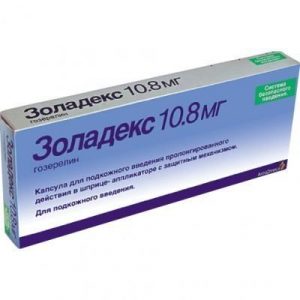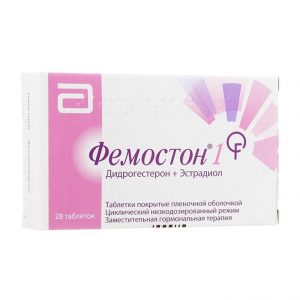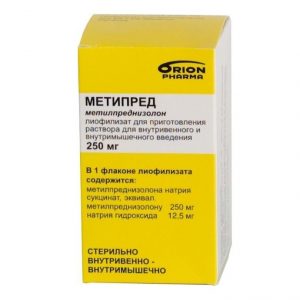Description
Pharmacological action of
Beclomethasone dipropionate is a prodrug and has little tropism for GCS receptors. Under the influence of esterases, it turns into an active metabolite – beclomethasone 17-monopropionate (B-17-MP), which has a pronounced local anti-inflammatory effect.
Reduces inflammation by reducing the formation of chemotaxis substance (effect on “late” allergy reactions), inhibits the development of an “immediate” allergic reaction (due to inhibition of the production of arachidonic acid metabolites and a decrease in the release of inflammatory mediators from mast cells) and improves mucociliary transport.
Under the action of beclomethasone, the number of mast cells in the bronchial mucosa decreases, edema of the epithelium, mucus secretion by the bronchial glands, bronchial hyperreactivity, marginal accumulation of neutrophils, inflammatory exudate and lymphokine production are reduced, macrophage migration is inhibited, and the intensity of the processes of infiltration and granulation is reduced.
Increases the number of active beta-adrenergic receptors, restores the patient’s response to bronchodilators, and reduces the frequency of their use.
Almost no resorptive effect after inhalation.
Does not stop bronchospasm, the therapeutic effect develops gradually, usually after 5-7 days of course use of beclomethasone dipropionate.
Contraindications
Hypersensitivity to any component of the drug.
pulmonary tuberculosis.
Children’s age up to 4 years. Beclomethasone, containing 250 mcg in 1 dose, not intended for use in pediatrics (i.e. in children under 18 years of age).
Caution
Use for glaucoma, systemic infections (bacterial, viral, fungal, parasitic), osteoporosis, cirrhosis, hypothyroidism, pregnancy, lactation.
Special instructions
Before prescribing inhalation preparations, it is necessary to instruct the patient on the rules for their use, which ensure the most complete penetration of the medicine into the desired areas of the lungs.
The development of oral candidiasis is most likely in patients with high levels of precipitating antibodies in the blood against Candida fungus, which indicates a previous fungal infection. After inhalation, rinse your mouth and throat with water. For the treatment of candidiasis, topical antifungal drugs can be used while continuing with beclomethasone therapy.
If patients take corticosteroids by mouth, then beclomethasone is prescribed against the background of taking the previous dose of corticosteroids, while patients should be in a relatively stable state.
After about 1–2 weeks, the daily dose of oral corticosteroids begins to gradually decrease. The dose reduction regimen depends on the duration of previous therapy and on the magnitude of the initial dose of corticosteroids. Regular use of inhaled corticosteroids allows in most cases to cancel oral corticosteroids (patients who need to take no more than 15 mg of prednisone can be completely transferred to inhalation therapy).
In this case, in the first months after the transition, the patient’s condition should be carefully monitored, until his pituitary-adrenal system is restored enough to provide an adequate response to stressful situations (for example, trauma, surgery or infection).
When transferring patients from taking systemic corticosteroids to inhalation therapy, allergic reactions (for example, allergic rhinitis, eczema) that were previously suppressed by systemic drugs may occur.
Patients with reduced function of the adrenal cortex, transferred to inhalation treatment, must have a reserve of corticosteroids and always carry a warning card, which should indicate that in stressful situations they need additional systemic prescription of corticosteroids (after eliminating the stressful situation, the dose of corticosteroids lower again).
A sudden and progressive worsening of asthma symptoms is a potentially dangerous condition, not infrequently threatening the patient’s life, and requires an increase in the dose of corticosteroids. An indirect indicator of treatment failure is the more frequent use of short-acting 2 adrenostimulants than before.
beclomethasone dipropionate for inhalation is not intended to stop attacks, but for regular daily use. For relief of attacks, 2 Short-acting adrenostimulants are used (e.g., salbutamol). In case of severe exacerbation of bronchial asthma or insufficient effectiveness of the therapy, the dose of inhaled beclomethasone dipropionate should be increased and, if necessary, a systemic corticosteroids and antibiotic should be prescribed if the infection develops.
With the development of paradoxical bronchospasm, you should immediately stop the use of beclomethasone, assess the condition of the patient, conduct an examination and, if necessary, prescribe therapy with other drugs.
With prolonged use of any inhaled GCS, especially in high doses, systemic effects may be noted (see “Side effects”), however, the likelihood of their development is significantly lower than when taking GCS inside.
Therefore, it is especially important that when the therapeutic effect is achieved, the dose of inhaled GCS should be reduced to the minimum effective dose that controls the course of the disease. At a dose of 1,500 mcg / day, the drug in most patients does not significantly suppress adrenal function. In connection with the possible adrenal insufficiency, special care should be taken and regular monitoring of the adrenal cortex function indicators when transferring patients taking corticosteroids inward to beclomethasone treatment.
It is recommended to regularly monitor the growth dynamics of children receiving inhaled GCS for a long time.
Introduction can be carried out with the help of special dispensers (spacers) that improve the distribution of the drug in the lungs and reduce the risk of side effects.
Abrupt withdrawal of beclomethasone aerosol is not recommended.
It is necessary to protect the eyes from getting the drug. By washing after inhalation, it is possible to prevent damage to the skin of the eyelids and nose.
A can of Beclomethasone must not be punctured, disassembled, or thrown into the fire, even if it is empty. Like most other aerosol inhalation products, beclomethasone may be less effective at low temperatures. When cooling the cylinder, it is recommended to remove the inhaler nozzle from it and warm it with your hands for several minutes.
Information on the possible effect of the drug on the ability to drive vehicles and mechanisms
No data.
Composition of
1 dose of the preparation contains:
Active ingredient:
beclomethasone dipropionate – 0.1 mg
(in terms of 100% substance)
Excipients:
Ethanol 96% 4.2 mg tetrafluorotluorotluorotluorethlortr 84.0 mg
Dosage and administration
beclomethasone is for inhalation use only.
beclomethasone is used regularly (even in the absence of symptoms of the disease), the dose of beclomethasone dipropionate is selected taking into account the clinical effect in each case.
With a mild course of bronchial asthma, forced inspiratory volume (FEV) or peak expiratory flow rate (PSV) is more than 80% of the expected values with a spread in PSV of less than 20%.
In the moderate course of FEV or PSV, it is 60–80% of the proper values, the daily spread of PSV indicators is 20–30%.
In severe course of FEV or PSV is 60% of the proper values, the daily spread of PSV indicators is more than 30%.
When switching to a high dose of inhaled beclomethasone dipropionate, many patients receiving systemic glucocorticosteroids will be able to reduce their dose, cancel them altogether.
The initial dose of beclomethasone is determined by the severity of bronchial asthma. The daily dose is divided into several doses.
Depending on the individual response of the patient, the dose of the drug can be increased until the clinical effect or reduced to the minimum effective dose.
Children 4 to 12 years old
The initial dose is 50 mcg 2 times a day. If necessary, the initial dose can be increased to 100 mcg 2 times a day. The maximum single dose is 200 mcg.
The maximum daily dose is 400 mcg. The daily dose is divided into 2–4 doses.
Adults and children 12 years of age and older:
Recommended starting doses:
· mild bronchial asthma – 200–600 mcg / day
· mild bronchial asthma – 600–1000 mcg / day
· severe bronchial asthma – 1000–2000 mcg / day.
The treatment of bronchial asthma is based on a stepwise approach – therapy is started according to the stage, appropriate severity of the disease.
Inhalation corticosteroids are prescribed for the second withdullness therapy.
Step 2. Basic therapy.
beclomethasone dipropionate 100-400 mcg 2 times a day.
Step 3. Basic therapy.
Use inhaled corticosteroids in a high dose or in a standard dose, but in combination with long-acting inhaled 2-adrenergic agonists.
Beclomethasone dipropionate in a high dose – 800–1600 mcg / day, in some cases megadoses up to 2000 mcg / day.
Step 4. Severe asthma.
Beclomethasone dipropionate in a high dose – 800–1600 mcg / day, in some cases megadoses up to 2000 mcg / day.
Step 5. Severe asthma.
Beclomethasone dipropionate in high dose (see steps 3 and 4).
Special patient groups
There is no need to adjust the dose of beclomethasone in the elderly, in patients with renal or hepatic insufficiency.
Skipping one dose of
If you accidentally skip inhalation, take the next dose at the right time in accordance with the treatment regimen.
Side effects
Adverse reactions are listed based on the anatomical and physiological classification and occurrence. The frequency of occurrence is determined in this way: very often 1/10, often 1/100 and <1/10, infrequently 1/1000 and <1/100, rarely 1/10000 and <1/1000 and very rarely <1 / 10000. Infections: very often – candidiasis of the mouth and pharynx. Using a spacer and rinsing the mouth and throat with water after inhalation reduces the likelihood of these side effects. On the part of the immune system: infrequently – skin hypersensitivity reactions, including rash, urticaria, itching, redness and swelling of the eyes, face, lips and mucous membranes of the mouth and pharynx very rarely – angioedema, anaphylactic reactions. From the endocrine system: possible systemic effects: very rarely – inhibition of adrenal cortex function, stunted growth in children and adolescents, cataracts, glaucoma. From the respiratory system: often dysphonia (hoarseness of the voice) or irritation of the mucous membrane of the pharynx, very rarely – paradoxical bronchospasm, which must be immediately stopped with a short-acting inhalation 2-adrenostimulator. In case of paradoxical bronchospasm, it is necessary to immediately stop the use of the drug in inhalations, assess the patient’s condition, conduct the necessary examination and prescribe the necessary treatment. From the skin and subcutaneous fat: often – bruising, thinning of the skin. Overdose of An acute overdose of the drug can lead to a temporary decrease in the function of the adrenal cortex, which does not require emergency therapy, since the function of the adrenal cortex is restored within a few days, which is confirmed by the concentration of plasma cortisol. In chronic overdose, persistent suppression of adrenal cortex function may be observed. In such cases, it is recommended to monitor the reserve function of the adrenal cortex. In case of an overdose, beclomethasone treatment with dipropionate can be continued in doses sufficient to maintain a therapeutic effect. Active ingredient beclomethasone lekarstvennaja form aerosols for ynhalyatsyy Appointment Adult prescription, Children prescription Indications Chronic obstructive pulmonary disease, asthma




